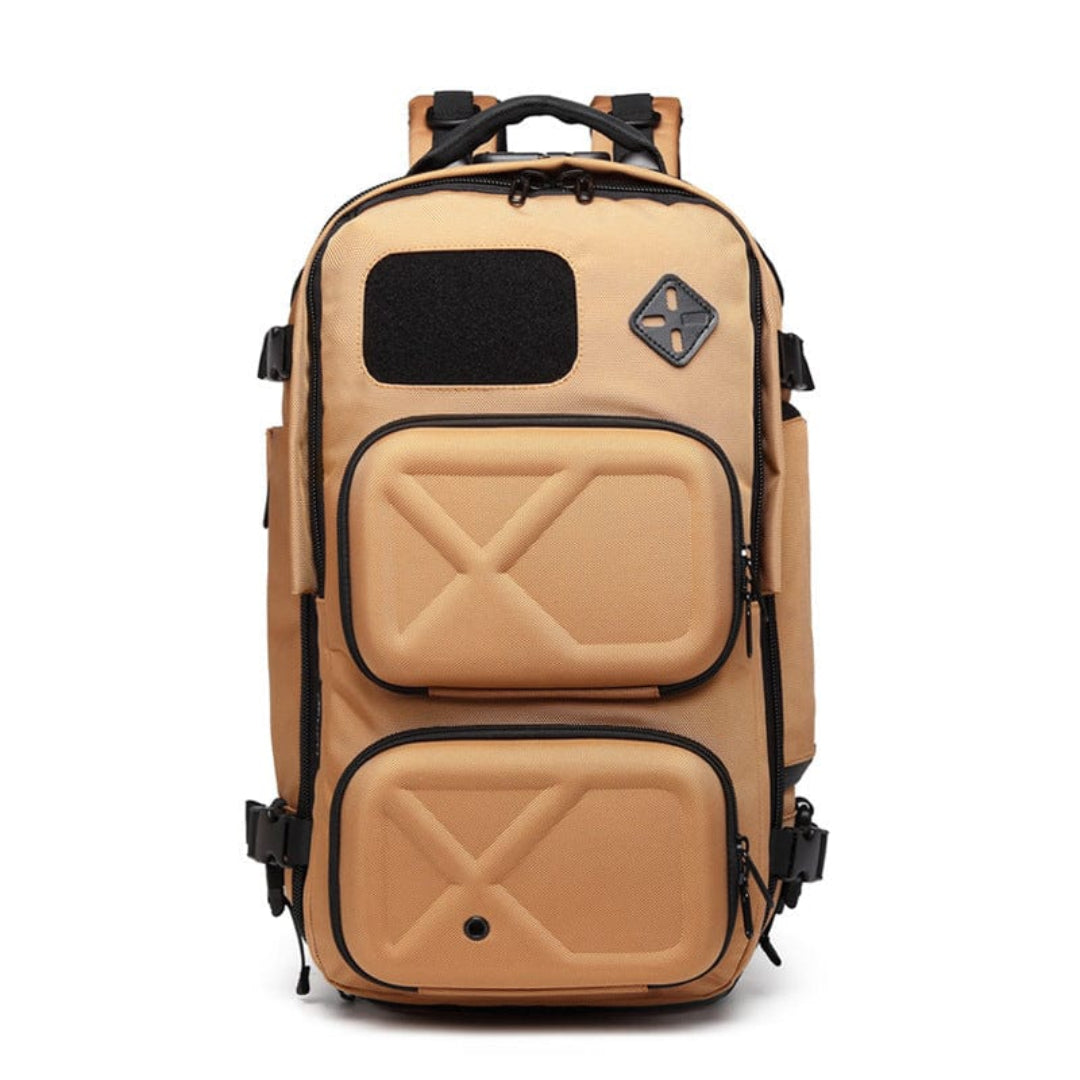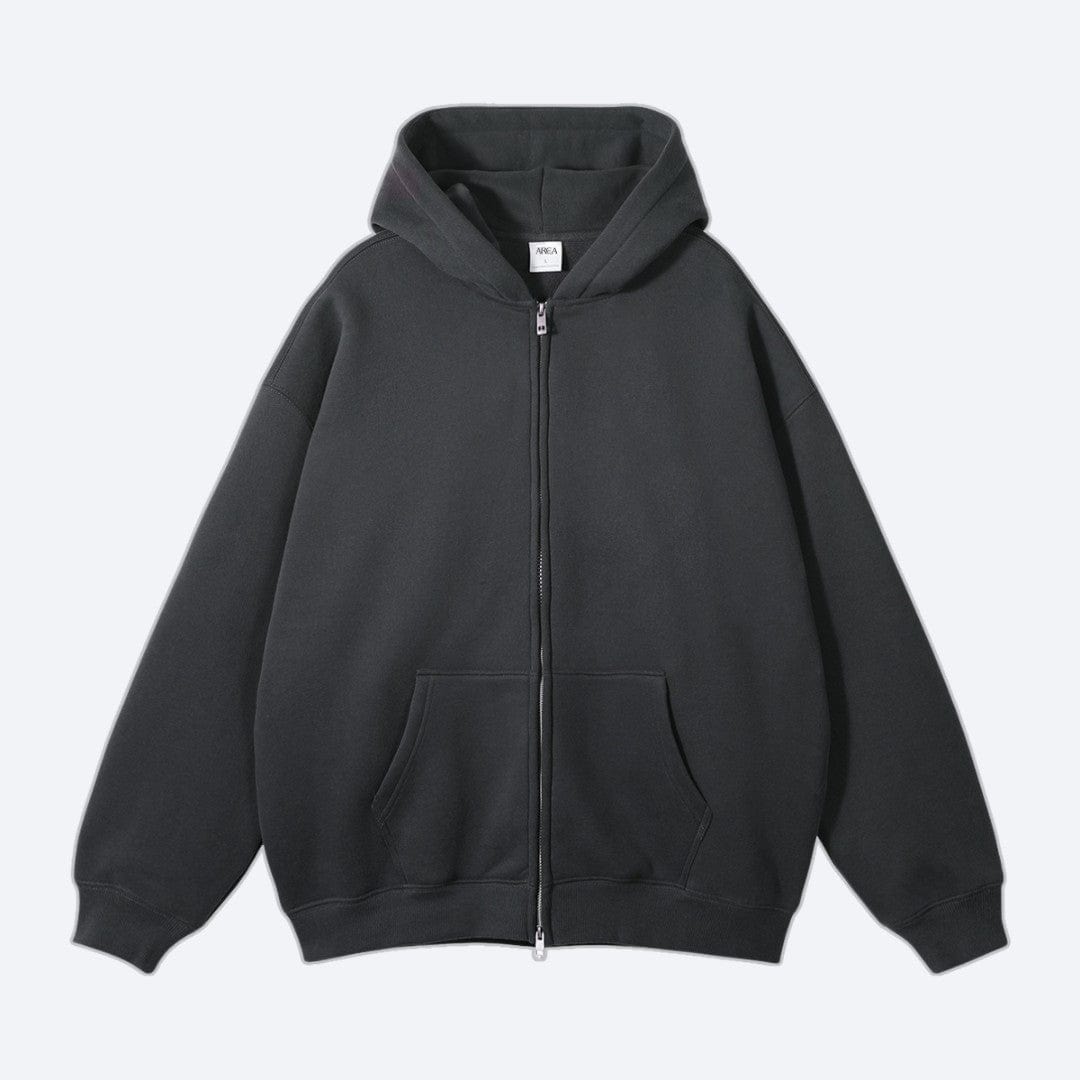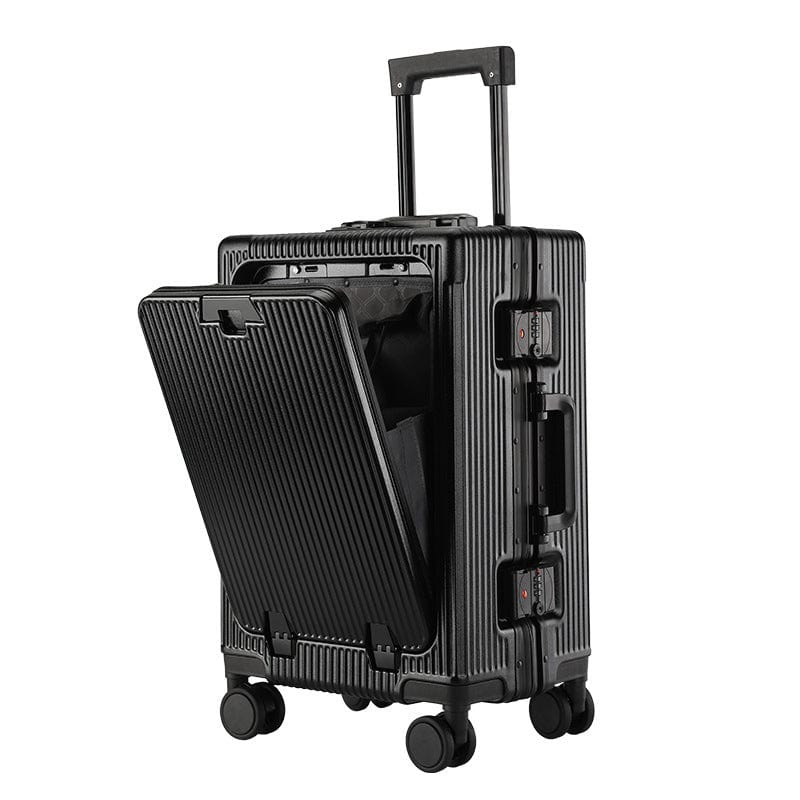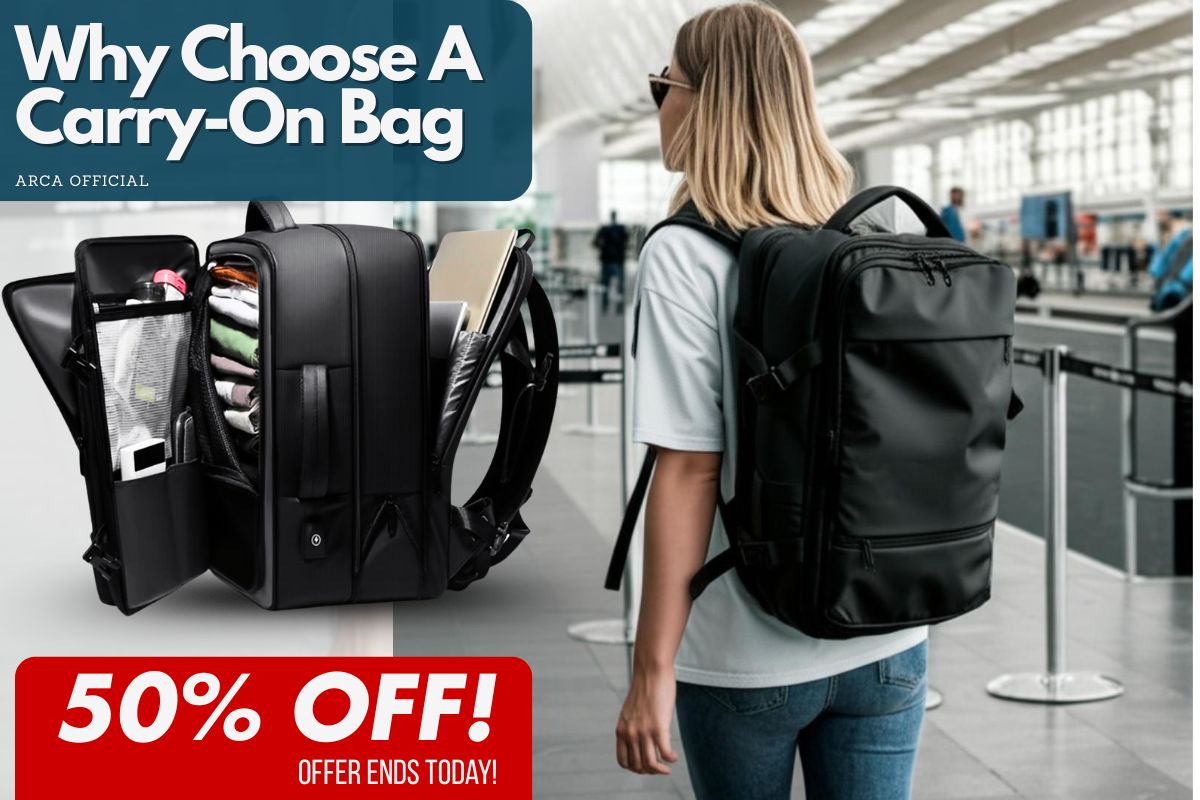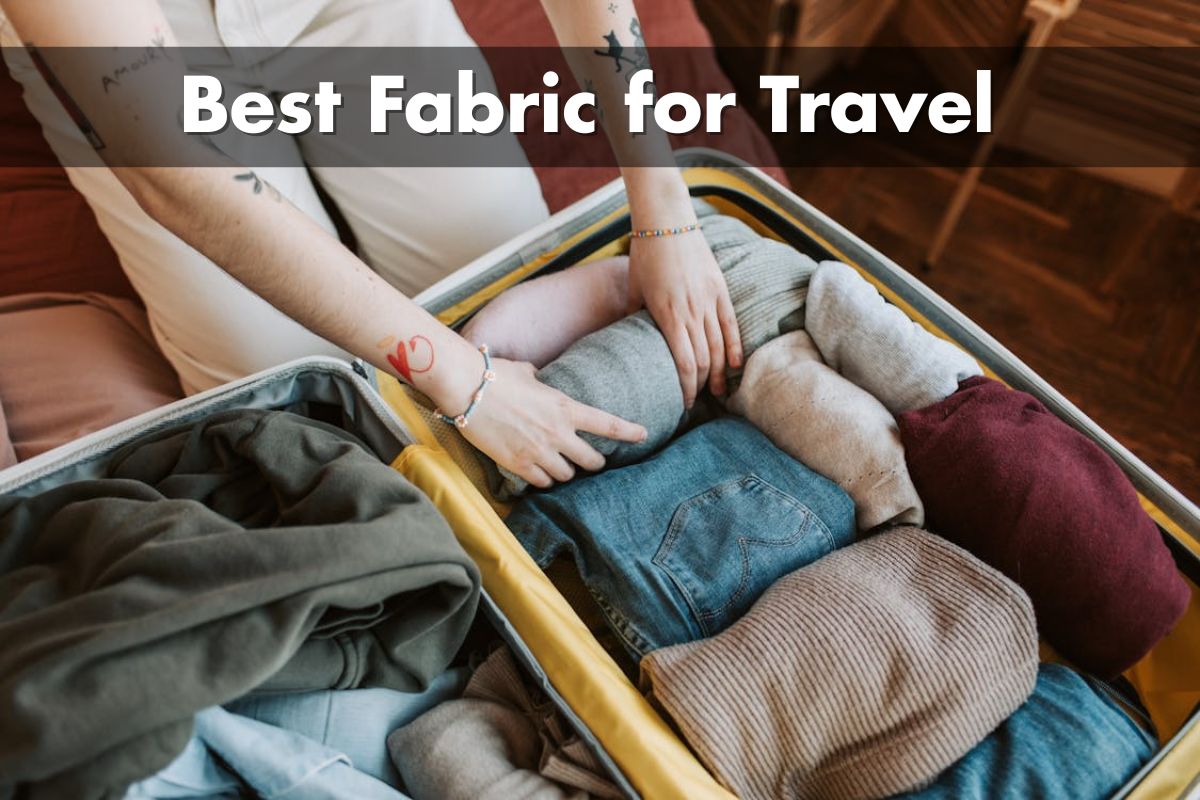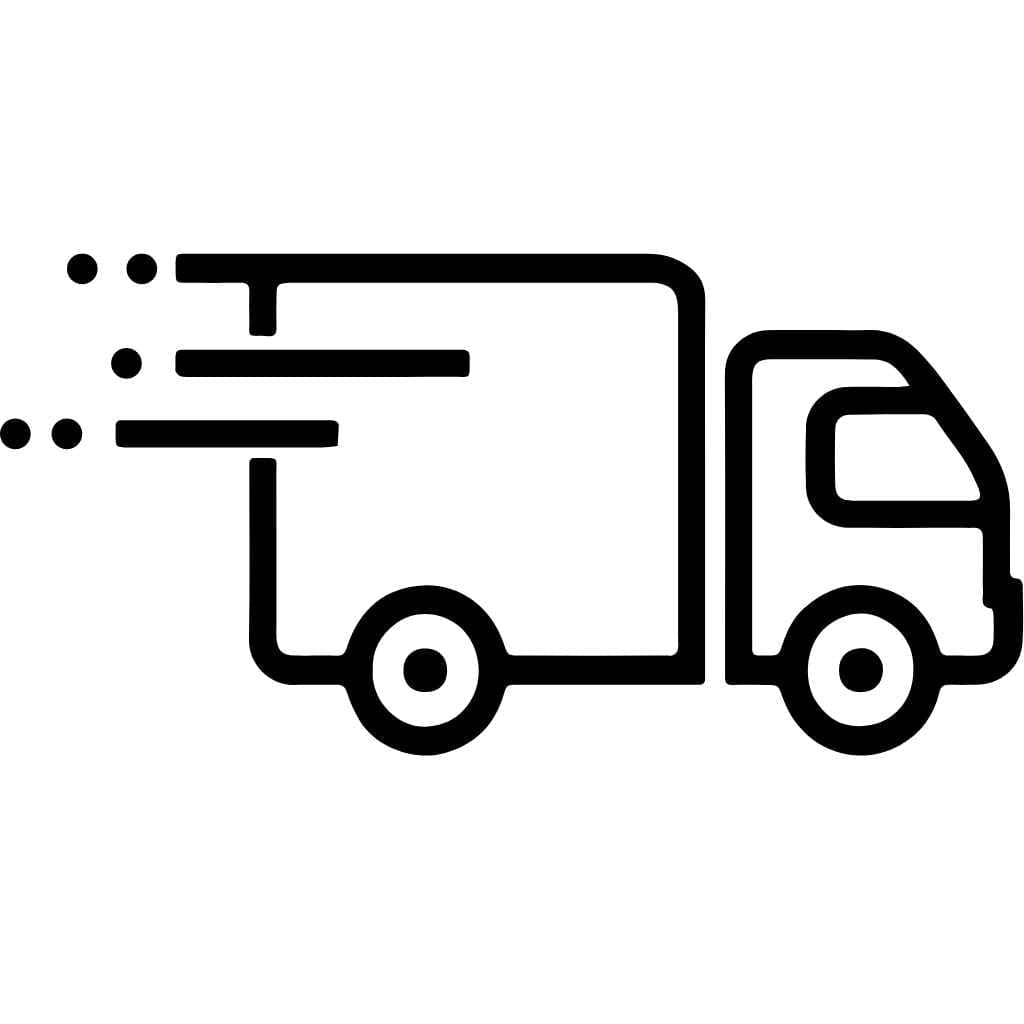Finding the perfect carry-on bag can feel like solving a travel puzzle. You need something that's spacious yet compact, durable yet lightweight, and organized enough to keep your essentials within easy reach.
From sleek backpacks to versatile duffels, today's carry-on options cater to a range of needs. Some bags double as mobile offices with clever compartments, while others prioritize comfort with adjustable straps and ergonomic designs. The best part? Many of these bags are designed to maximize space without sacrificing style or functionality, ensuring you travel light and smart.
Why Choose A Carry-On Bag
A carry-on bag enhances convenience and efficiency during travel. It eliminates the need to wait at baggage carousels, letting you head straight to your destination upon arrival. This time-saving aspect is especially valuable for short trips or tight schedules.
Carry-on bags offer greater mobility in crowded spaces. You can easily navigate airports, train stations, and hotel lobbies without the added bulk of larger luggage. Features like telescoping handles and spinner wheels make maneuvering smoother, even in busy terminals.
Packing in a carry-on keeps your essentials within reach throughout the journey. Whether you want to access toiletries for a quick freshen-up or grab a jacket during your flight, the close proximity of your belongings is a significant advantage. Efficient organization tools like packing cubes and zippered compartments ensure everything stays in its designated place.
The compact size of a carry-on ensures compliance with most airline restrictions. Dimensions typically range up to 22 x 14 x 9 inches, keeping your bag suitable for overhead bins. This compliance removes the uncertainty of additional fees or delays associated with oversized luggage.
A well-chosen carry-on also provides durability and style. Many models combine strong materials with sleek designs to withstand frequent use while reflecting your personality. Whether you prefer a rugged backpack for outdoor adventures or a chic spinner for business trips, there's a carry-on to match your needs.
Types Of Carry-On Bags
Carry-on bags come in various styles, each catering to different travel needs and preferences. Understanding the types available can help you choose the most suitable option for your journey.
Backpacks
Backpacks provide a hands-free solution with maximum mobility. They distribute weight evenly across your shoulders, making them ideal for commuting or navigating uneven surfaces. Travel backpacks often feature multiple compartments for organization, such as laptop sleeves, hidden pockets, and expandable sections. Some options, like 30-45 liter models, fit under airline requirements while offering enough space for a few days' worth of clothing and essentials. Look for durable materials like ballistic nylon or weather-resistant coatings to ensure long-lasting use.
Duffel Bags
Duffel bags balance flexibility and capacity, making them perfect for weekend trips or short adventures. Many modern designs include adjustable straps, lightweight materials, and thoughtful compartments to separate shoes or toiletries. A sleek duffel can act as a personal item, sliding easily under the seat in front of you. For outdoor enthusiasts, heavy-duty options made from durable fabrics like polyester tarpaulin provide extra resilience while accommodating items like gear or bulky coats.
Rolling Luggage
Rolling luggage combines structure with convenience. Two-wheel and spinner-wheel designs let you glide through airports and crowded areas effortlessly. Compact dimensions, such as 22 x 14 x 9 inches, meet most airline carry-on allowances, ensuring hassle-free boarding. These bags often come with telescoping handles, sturdy shells for added protection, and spacious interiors equipped with compression straps and zippered compartments to optimize packing. Consider hard-shell models if you need enhanced protection or soft-shell versions for extra flexibility.
Tote Bags
Tote bags are stylish and functional, making them ideal for light packers or those seeking versatility. These bags offer open interiors, often with smaller side pockets for organizing personal items. They’re great for carrying essentials like tablets, books, and small toiletries, especially for day trips or overnight stays. Materials like neoprene add an element of modernity, while durable fabrics and reinforced handles accommodate frequent use. Many totes double as a personal item, complementing a larger carry-on for added storage without exceeding airline limits.
Key Features To Look For
Selecting the best carry-on bag involves evaluating features that improve functionality and compliance with airline regulations. Focusing on size, durability, storage, and weight ensures you find an option tailored to your travel needs.
Size And Dimensions
Ensure the bag meets airline carry-on size limits, which typically range from 22 x 14 x 9 inches to 24 x 16 x 10 inches, depending on the carrier. Look for expandable options for added flexibility while staying compliant with standard dimensions.
Material And Durability
Opt for high-quality materials like ballistic nylon, polycarbonate, or aluminum, which offer excellent durability and resistance to wear. Water-resistant finishes protect against spills or light rain, especially for frequent travelers or outdoor environments.
Storage And Compartments
Seek bags with thoughtfully designed compartments to keep your items organized during travel. Separate sections for shoes, toiletries, and electronics, such as a padded laptop sleeve, make it easier to access essentials. External pockets offer quick access to items like boarding passes or headphones.
Weight And Portability
Lightweight designs reduce strain when lifting bags into overhead bins. Features like telescoping handles, 360-degree spinner wheels, and padded shoulder straps, for duffels or backpacks, enhance portability in crowded spaces and airport corridors.
Choosing The Right Bag For Your Needs
Selecting the ideal carry-on depends on your travel style and the type of trip you're planning. Considering factors like trip duration, purpose, and personal packing habits ensures you make the right choice.
Short Trips And Weekend Getaways
For short trips, compact and lightweight options work best. Backpacks or small duffel bags are ideal due to their flexibility and ease of mobility. Look for models with multiple compartments to keep essentials like toiletries, electronics, and clothing organized. Bags made from durable materials like nylon, which resist abrasion, can withstand frequent handling during quick travel. Expandable options can accommodate last-minute additions without compromising space.
Long Journeys And Extended Travel
During longer trips, spacious carry-ons with advanced features provide the most convenience. Rolling luggage with telescoping handles and four-spinner wheels offers effortless navigation in crowded areas. Choose designs with an organized interior, including separate sections for shoes, clothing, and accessories. Hard-shell suitcases crafted from polycarbonate provide added protection for fragile items while maintaining compliance with airline regulations. These bags often include built-in TSA locks and expandable compartments for extra storage on return trips.
Business Travel
For business trips, professional aesthetics and functional features matter. Opt for rolling carry-ons or structured backpacks with padded laptop compartments and organizers for documents or chargers. Consider a design with easy-access front pockets to store travel essentials like boarding passes or passports. Materials like ballistic nylon ensure durability, while sleek finishes maintain a polished look for formal settings. Compact designs that comply with carry-on restrictions guarantee seamless movement through security checks.
Family Travel
Family travel requires carry-ons with maximum capacity and accessibility. Rolling luggage often provides the best solution, offering ample space for shared essentials and multiple compartments for easy organization. Some models feature built-in laundry bags or shoe compartments, simplifying packing for multiple people. Include backpacks or tote bags as your personal item for carrying snacks, entertainment, or additional clothing. Durable, water-resistant materials can handle spills or wear from active use, ensuring reliability throughout the journey.
Pros And Cons Of Hard-Sided Vs. Soft-Sided Bags
Hard-Sided Bags
Pros:
Hard-sided luggage provides enhanced protection for valuables. It's particularly effective for fragile items like electronics, cameras, or medical equipment. Many are made from materials like polycarbonate or aluminum, with aluminum being the most durable option. These bags are resistant to water and offer security against theft, as rigid exteriors are harder to cut open. Their structured design helps you maximize internal space and keeps items neatly compressed during travel.
Cons:
Despite their durability, hard-sided bags are prone to dents or cracks from rough handling, requiring full replacements in severe cases. Sizes are typically inflexible, and they lack external pockets for quick-access items like passports or boarding passes. Heavier materials, especially aluminum, add weight, which may be inconvenient for carry-on use. They can also take up more storage space when not in use.
Soft-Sided Bags
Pros:
Soft-sided bags offer flexibility, making it easier to fit them into tight compartments. Most feature external pockets for convenient access to items like phones or wallets. High-denier fabrics can resist wear and tears, and minor damage, like holes, is often repairable with patches. Soft-sided luggage is typically lighter than hard-sided alternatives, improving portability. Expandable designs add packing capacity, letting you adjust based on your trip needs.
Cons:
Soft-sided bags are less protective of fragile or valuable items because of their pliable exteriors. They’re susceptible to damage from sharp objects and may rip or fray under rough conditions. Unlike hard-sided options, they’re not inherently water-resistant unless treated with additional coatings. Overpacking can also cause the bag to lose its shape, making it harder to roll or carry comfortably.
Tips For Packing Your Carry-On Bag Efficiently
Organize your packing strategy to utilize carry-on space effectively. Start with a packing list, avoiding items not essential for your trip. Keeping your bag lightweight and organized enhances mobility and ensures compliance with airline restrictions.
1. Use Compression Straps and Packing Cubes
Maximize space by compressing clothes and securing them. Built-in straps shrink bulky items, while packing cubes separate categories like clothing, electronics, and toiletries, increasing accessibility and maintaining order.
2. Pack Heavy Clothing Wisely
Wear heavier items like boots or coats during travel. This frees up bag space for lighter essentials while ensuring you're adequately prepared for varying weather conditions at your destination.
3. Prioritize Essentials and Organize
Place critical items, including medications, electronics, and travel documents, in easily accessible compartments. Group toiletries in a TSA-compliant bag to streamline security checks. Keep valuables in your personal item for added security if you’re required to gate-check your carry-on.
4. Stick to the Rule of Three
Limit yourself to three pairs of footwear, tops, and bottoms. Choose versatile clothing that works for multiple outfits. For example, opt for neutral-colored pants and mix-and-match shirts to reduce packing volume while maintaining style.
5. Avoid Overpacking
Pack only what you'll realistically use. Overpacking wastes space and complicates re-packing. Consider the trip length and planned activities to guide your choices.
6. Place Fragile Items Strategically
Position items like electronics and breakables in the center of the bag, surrounded by soft clothing for extra cushioning. Leave no room for shifting to prevent potential damage during travel.
7. Balance Weight Distribution
Distribute the weight evenly to prevent strain while carrying or rolling the bag. Heavier items should stay near the bottom or closer to your back in backpacks for stability and comfort.
8. Utilize Personal Item Space
Leverage your under-seat personal item for inflight essentials like headphones, snacks, and books. Items in this bag should cater to your comfort during travel while leaving enough room in your carry-on for larger essentials.
Frequently Asked Questions
What is the maximum size for a carry-on bag?
Most airlines accept carry-on bags with dimensions up to 22 x 14 x 9 inches, including wheels and handles. Check with your airline for specific requirements, as some international carriers may have smaller limits.
Can a duffel bag be used as a carry-on?
A duffel bag can qualify as a carry-on if it meets the airline's size restrictions. Many duffel bags offer soft, flexible designs, making them easier to fit in overhead compartments.
Are hard-sided carry-ons better than soft-sided ones?
Hard-sided carry-ons provide better protection for fragile items and are water-resistant, but they can be less flexible and heavier. Soft-sided bags offer lighter weight and flexibility, making them easier to fit in tight spaces. Choose based on your travel needs.
How do I ensure my carry-on is lightweight?
Choose materials like ballistic nylon or polycarbonate to reduce overall weight. Pack only essentials, use compression straps or packing cubes, and wear heavy items like jackets during travel.
Can I use a personal item along with my carry-on?
Most airlines allow you to bring a carry-on bag and one personal item like a backpack, tote bag, or laptop bag. The personal item should fit under the seat in front of you.
What carry-on features are essential for frequent travelers?
Frequent travelers benefit from features like spinner wheels for mobility, expandable compartments for flexibility, and padded sections for electronics. Durable materials and organizational compartments also enhance convenience.
Do all airlines have the same carry-on policies?
Carry-on policies vary by airline, especially regarding size limits, weight restrictions, and personal item allowances. Verify the specific rules of the airline you're flying with to ensure compliance.
How can I secure my carry-on bag?
Use a TSA-approved lock to secure zippers and protect your belongings. Hard-sided bags often include built-in locks for enhanced security.
What’s the best carry-on bag for business trips?
For business travel, opt for rolling carry-ons or structured backpacks with padded compartments for laptops and electronics. Choose professional designs that maintain functionality and style.
Can I pack liquids in a carry-on bag?
You can pack liquids in carry-ons if they follow the TSA 3-1-1 rule: containers should hold no more than 3.4 ounces, fit in one quart-sized bag, and be easily accessible for screening.
Conclusion
Choosing the best carry-on bag can transform your travel experience, making it smoother and more enjoyable. By considering your travel style, trip length, and essential features like size, durability, and organization, you can find a bag that meets your needs perfectly. Whether you prefer a sleek backpack, a spacious duffel, or a sturdy rolling suitcase, the right carry-on ensures convenience, mobility, and peace of mind throughout your journey.
Investing in a high-quality carry-on isn't just about meeting airline requirements—it's about enhancing your overall travel comfort and efficiency. With the right bag, you'll be ready for any adventure, big or small, with everything you need within reach.


